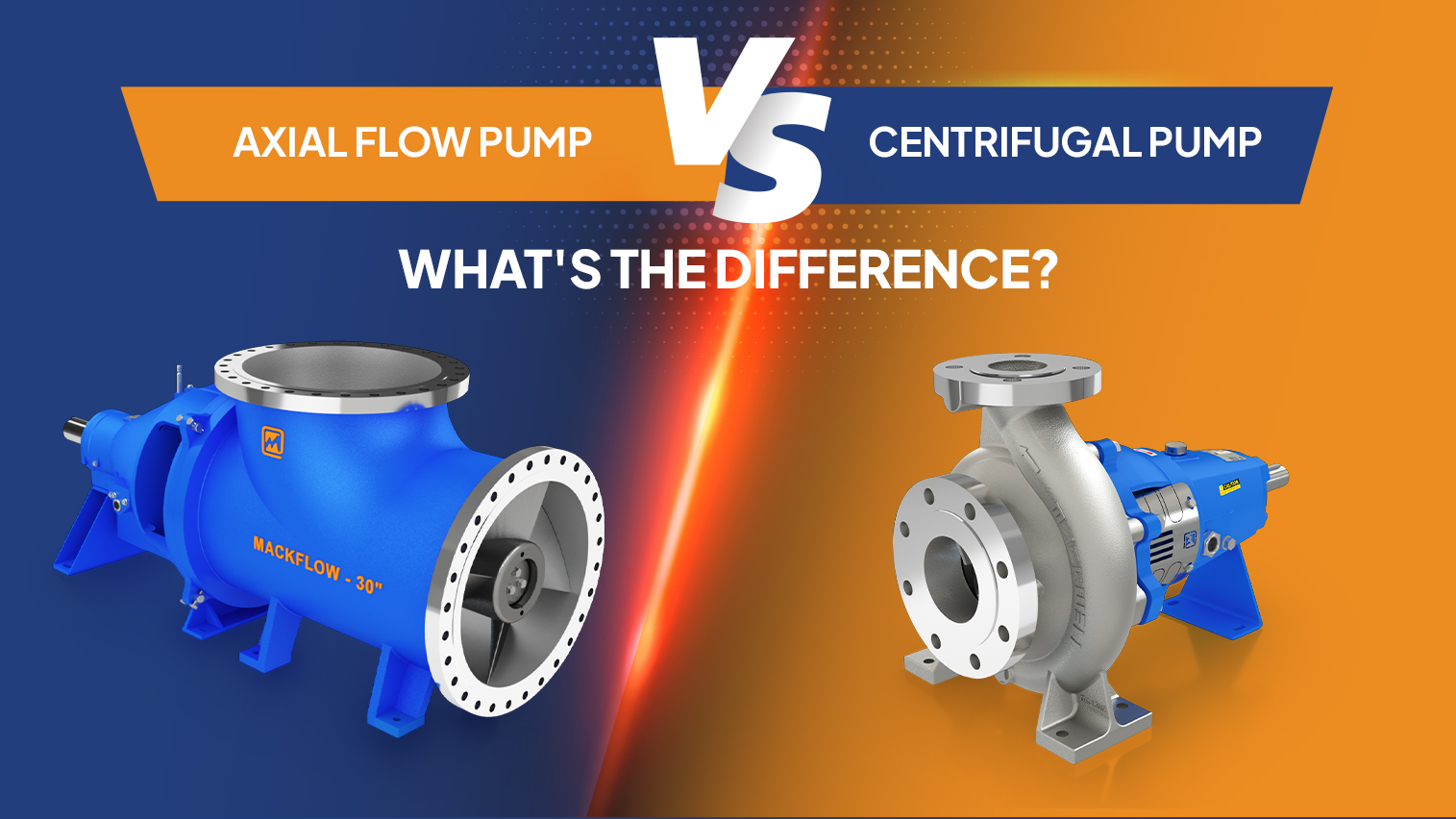Everything you Need to Know About Axial Flow Pumps

When it comes to moving large volumes of fluid efficiently, axial flow pumps stand out as the top choice. As the name suggests, these pumps direct fluid flow along the axis of the pump, unlike centrifugal pumps that push fluid outward in a radial direction. Their unique impeller design propels the liquid parallel to the pump shaft, generating exceptionally high flow rates.
Did you know, Axial Flow Pumps are also called Propeller Pumps?
Ever noticed how a ship’s propeller moves water? Axial flow pumps operate in a similar way! The key distinction lies in how they transfer energy; centrifugal pumps create a spinning motion that pushes fluid outward, while axial flow pumps maintain a straight-line flow along the axis of rotation.
Where are Axial Flow Pumps used?
Axial Flow pumps are used in diverse industries, owing to their high-flow and low-head applications.
- Agriculture: Ideal for large-scale irrigation, which ensures farmlands receive uninterrupted water supply.
- Manufacturing: Used in cooling systems for heavy machinery to maintain optimal operating temperatures.
- Water Management: Essential for flood control, sewage treatment, and land drainage systems.
- Power Plants: Used in water circulation systems and evaporators.
- Wastewater Treatment: Helps move large volumes of water efficiently in sewage digesters and treatment facilities.
What to keep in mind before selecting Axial Flow Pumps?
Selecting the right pump involves understanding several performance parameters:
- Flow rate – Expressed in gallons per minute (gpm), it determines how much fluid the pump can move.
- Pressure – Expressed in bar or pounds per square inch (psi), it determines how much fluid the pump can move.
- Head – Represents the height the pump can lift a fluid, measured in feet (ft) or meters (m).
- Net positive suction head (NPSH) – Essential for preventing pump cavitation, ensuring smooth operation.
- Output power – Also called water horsepower, this is the actual power delivered to the fluid by the pump. It is measured in horsepower (hp).
- Input power – Also called brake horsepower, it is the energy required to drive the pump. It is measured in horsepower (hp).
- Efficiency – It is the ratio of input power to output power, indicating overall energy effectiveness.
Materials
The durability and efficiency of a pump depend on the materials used in its construction. Various factors, such as fluid type, operating environment, and pressure conditions, play a crucial role in material selection.
- Cast iron – Provides high tensile strength and durability for high-pressure applications.
- Plastics – Offers extensive resistance to corrosion and chemical attack.
- Steel and Stainless Steel – Protects against chemical and rust corrosion, while ensuring structural strength.
- Other materials – Aluminium, brass, bronze, ceramic, etc.—are also used based on specific industry needs.
Additional Considerations
- Chemical Compatibility – Pump parts must be made of chemically compatible materials that resist corrosion or contamination when handling aggressive fluids.
- Explosion-proof Design – Non-sparking materials should be used for operating environments susceptible to fire hazards.
- Sanitation Standards – Food and Beverage industries require easy to clean, seamless pumps with high-density seals.
- Abrasive Resistance – Pumps dealing with sludges or solids must be designed for wear resistance.
Media Type
While choosing an axial flow pump, it is important to analyse the fluid properties:
- Viscosity – Used to measure the thickness of the liquids, viscous fluids such as sludges generate higher system pressures and require more pumping power to move through the system. Axial flow pumps are designed to handle low-viscosity fluids because they have high flow rates.
- Consistency – The composition of the fluid—whether it contains suspended solids, corrosive chemicals, or abrasive particles—determines the pump’s materials and requirements. Axial flow pumps handle clean or slightly contaminated liquids efficiently, but for highly viscous liquids or solid-laden liquids, specialised impellers or wear-resistant materials may be necessary.
Mackwell Pumps
Our pumps are considered one of the leading axial flow pump manufacturers. We specialise in manufacturing pumps designed for efficiency and durability across industries. Whatever the industry, we have pumps for all your needs.





